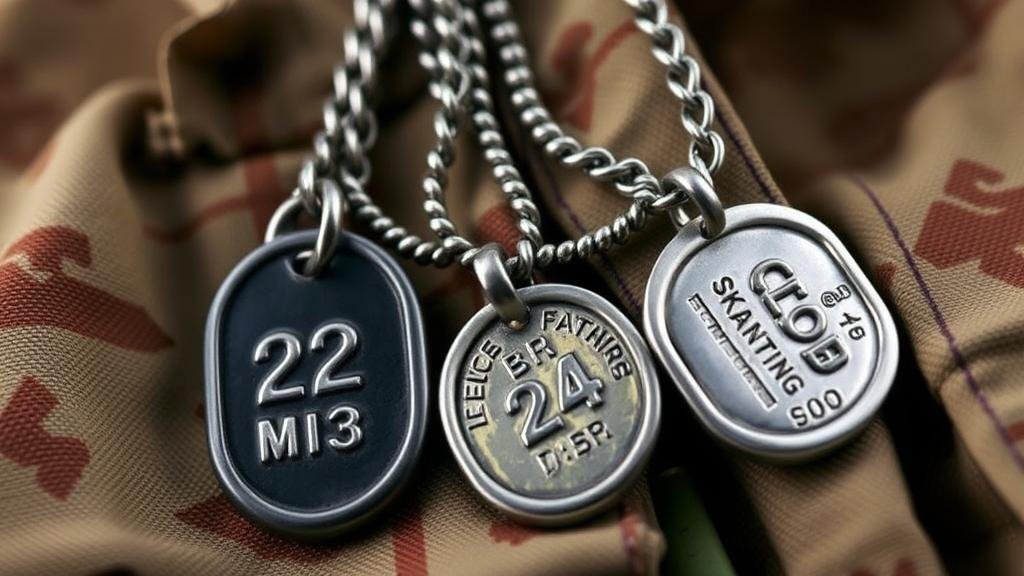Recovering Dog Tags and Identification Items in Military Skirmish Zones
Recovering Dog Tags and Identification Items in Military Skirmish Zones
The recovery of dog tags and identification items in military skirmish zones is a critical aspect of post-conflict analysis and personal identification. These items serve as vital links between fallen soldiers and their families, providing closure to grieving loved ones while also aiding in military accountability. This article delves into the methodologies, challenges, and best practices involved in the recovery of these important artifacts from military conflict zones.
Historical Context of Dog Tags
Dog tags have served as an important identification tool since the American Civil War. Initially, they were simply metal identifiers worn by soldiers to distinguish each other on the battlefield. Today, they are standardized items issued by military organizations globally, often containing personal information such as the soldiers name, service number, blood type, and emergency contacts.
According to the U.S. Department of Defense, nearly 1.3 million soldiers have died in combat roles since the founding of the military, making the need for reliable identification increasingly crucial. simplicity and robustness of dog tags ensure they endure the harshest of environments, making them a reliable source for post-conflict identification.
Methodologies for Recovery
Recovering dog tags and identification items from skirmish zones involves a range of techniques and technologies. A combination of ground searches, forensics, and technology is often employed to locate and recover these items effectively.
- Ground Reconnaissance: Personnel trained in battlefield recovery often conduct systematic searches of the area where the conflict occurred. This involves the use of metal detectors and search grids.
- Forensic Recovery: In instances of mass casualties, forensic teams may set up protocols to excavate areas carefully, recording the findings with GPS for accurate location data.
- Use of Drone Technology: Drones equipped with thermal imaging or high-resolution cameras can scan larger areas more efficiently than foot patrols, helping to identify potential mass grave sites or scattered remains.
Challenges in Recovery Operations
Despite technological advancements, recovering dog tags and identification items remains fraught with challenges. Environmental conditions, security concerns, and logistical issues frequently hinder recovery efforts.
- Environmental Factors: Natural elements such as weather, terrain, and vegetation can obscure dog tags and other items, making recovery difficult.
- Security Risks: Active conflict zones pose significant risks to recovery teams. Ongoing hostilities can lead to disrupted operations, injuries, or fatalities among recovery personnel.
- Legal and Ethical Considerations: Recovery missions must navigate complex legal frameworks and cultural sensitivities associated with dealing with war remains and personal items.
Case Studies and Real-World Applications
Several case studies illustrate the importance and challenges associated with recovery efforts. One notable example is the 2004 recovery operation in Iraq, following the intense fighting in Fallujah. U.S. military teams conducted extensive searches after the battle, employing both dogs and high-tech equipment to locate dog tags scattered in the vicinity. Ultimately, many identification items were recovered, providing closure to families and contributing to military accountability.
Similarly, in the aftermath of World War II, recovery teams diligently worked to identify and return the remains of soldiers to their families. U.S. Armys Central Identification Laboratory implemented processes that required painstaking examination of dog tags, dental records, and other identification items to ensure accuracy during the identification process.
Best Practices for Recovery Operations
To enhance the effectiveness and efficiency of recovery operations, several best practices have been identified:
- Standardization of Procedures: Useing standardized procedures across military branches can facilitate more effective recovery missions and ensure consistency in data collection.
- Collaboration with Local Authorities: Engaging local and international organizations can improve logistical support and security, increasing recovery chances.
- Training and Logistics: Ensuring that personnel are adequately trained in both recovery techniques and cultural sensitivities is crucial for success in diverse operational environments.
Conclusion
The recovery of dog tags and identification items in military skirmish zones not only serves a functional purpose of identifying fallen soldiers but is also a poignant reminder of the human cost of conflict. The challenges in this field demand a concerted effort from military personnel, forensics experts, and technology developers to ensure that those who serve are not forgotten. By adhering to best practices and employing innovative methodologies, future recovery operations can honor the memory of those who have sacrificed their lives in service.
The importance of returning identity items extends beyond mere recovery; it is about restoring dignity, providing closure, and reinforcing a commitment to honor in the face of conflict.



